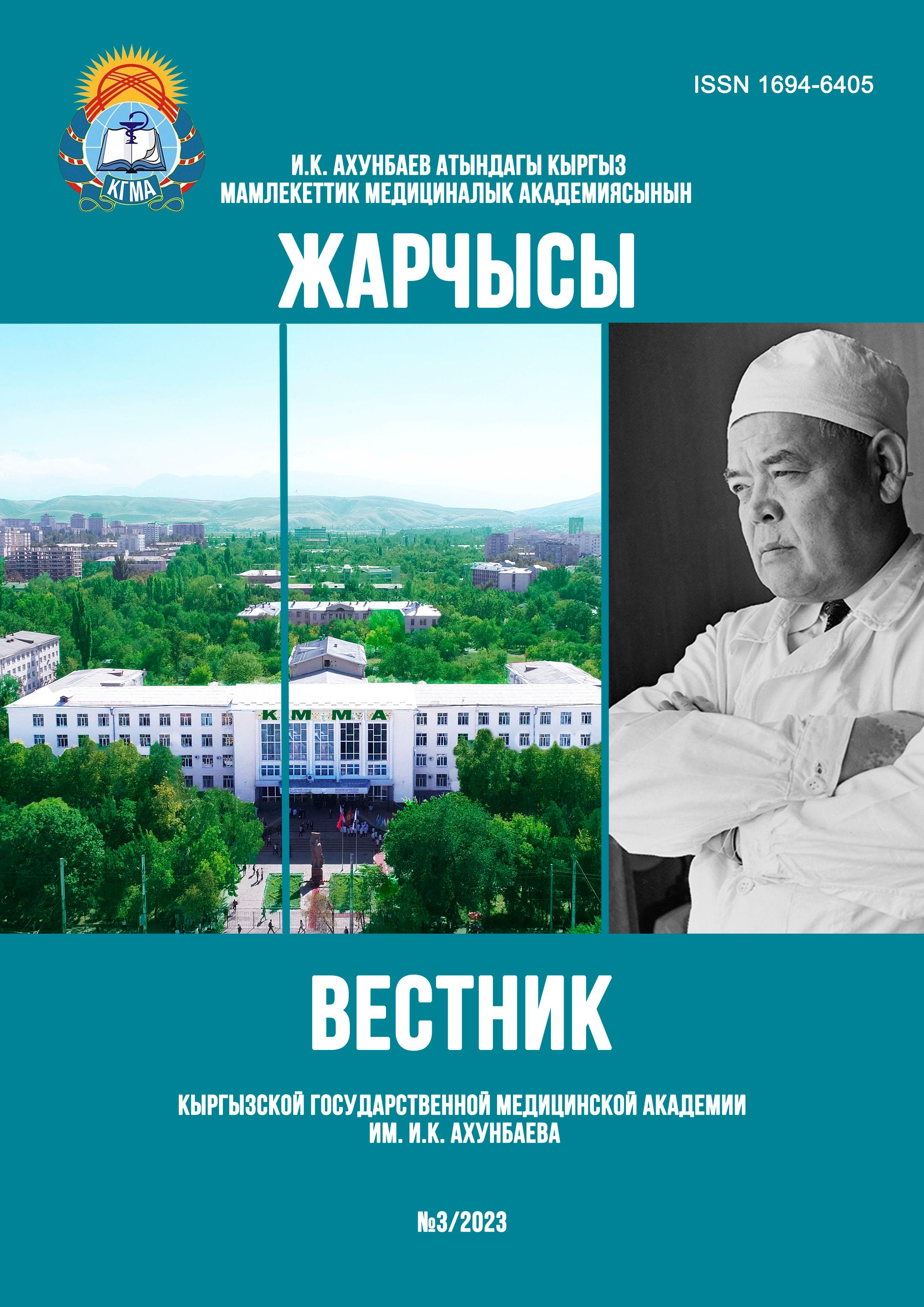RESULTS OF PORTOSYSTEMIC SHUNTING IN THE ERLY POSTOPERATIVE PERIOD
DOI:
https://doi.org/10.54890/1694-6405_2023_4_91Abstract
In the conditions of Kyrgyzstan, operations to create portosystemic anastomoses are not only a measure for the prevention of bleeding from the Varicose veins of the esophagus and stomach, before liver transplantation, but also the final method of treatment for this category of patients, because for many patients there is simply no possibility for radical surgical treatment of cirrhosis.
The experience of surgical treatment of 153 patients with portal hypertension from 1997 to 2016 was analyzed.
Proximal splenorenal anastomosis (PSRA) with splenectomy was formed in 78 (50.9%) patients. Of 78 (50.9%) patients, 55 (35.9%) patients underwent standard splenectomy with the formation of an end-to-side PSRA. In 3 (21.4%) patients, interventions were performed at the height of bleeding from varicose veins of the esophagus, the remaining 11 (78.6%) patients were performed as planned. PSS thrombosis developed in 13 (8.5%) patients, the largest number of thrombosis occurred in PSRA, in 10 (6.5%) of 13 cases, which is possibly associated with the greatest trauma to the pancreas. 7 (4.6%) patients died from relapse of Gastroesophageal bleeding due to thrombosis of the portosystemic shunt.
Rules that must be followed to minimize complications: the use of the lower pole branch of the splenic vein to form portioned proximal splenorenal anastomosis, this allows: to preserve hepatopetal blood flow; control the patency and consistency of the anastomosis; prevent thrombosis of the anastomosis.We consider the splenorenal side-to-side anastomosis to be the most physiological and effective organ-preserving portosystemic shunt.
Keywords:
liver cirrhosis, portal hypertension, splenorenal anastomosis, portosystemic shunting, hepatology.References
1. Велиханова Д.М., Караханов К.Я. Селективный дистальный спленоренальный шунт в лечении портальной гипертензии. Хирургия. 2000;7:60-66.
2. Верткин А.Л., Соснин П.С., Машарова А.А. Новые возможности лечения и профилактики кровотечений из варикозно-расширенных вен пищевода у больных циррозом печени. Русский медицинский журнал. 2013;35:1799-1804.
3. Sato Y, Oya H, Yamamoto S, Kobayashi T, Nakatsuka H, Watanabe T et al. A10 year experience of shunt surgery for esophagogastric varices in a single center in Japan. J. Hepatogastroenterology. 2011;58(106):444-452.
4. Лесовик В.С. Анатомо-экспериментальное обоснование микрохирургических каркасных конце-концевых спленоренальных анастомозов при портальной гипертензии [диссертация]. Оренбург: ГОУВПО "Оренбургская государственная медицинская академия"; 2007. 115 с.
5. Rosemurgy AS, Bloomston M, Clark WC, Thometz DP, Zervos EE. H-graft portacaval shunts versus TIPS: ten-year follow-up of a randomized trial with comparison to predicted survivals. Ann. Surg. 2005;241(2):238–246. https://doi.org/10.1097/01.sla.0000151884.67600.b6
6. Лебезев В.М. Портокавальное шунтирование у больных с портальной гипертензией [диссертация]. М.; 1994. 213 с.
7. Назыров Ф.Г. Девятов А.В., Байбеков И.М. Сплено-супраренальный анастомоз в хирургии портальной гипертензии. Анналы хирургической гепатологии. 2012;17(1):45-52.
8. Castaing D, Adam R, Azoulay D. Chirurgie du foie et de l’hypertension portale. Paris: Masson, 2006. 248 p. French.
9. Котив Б.Н., Дзидзава И.И., Турмаханов С.Т. Выбор метода портокавального шунтирования при кровотечениях из варикозно расширенных вен пищевода и желудка при портальной гипертензии. Вестник Новгородского государственного университета им. Ярослава Мудрого. 2014;78:62-66.







